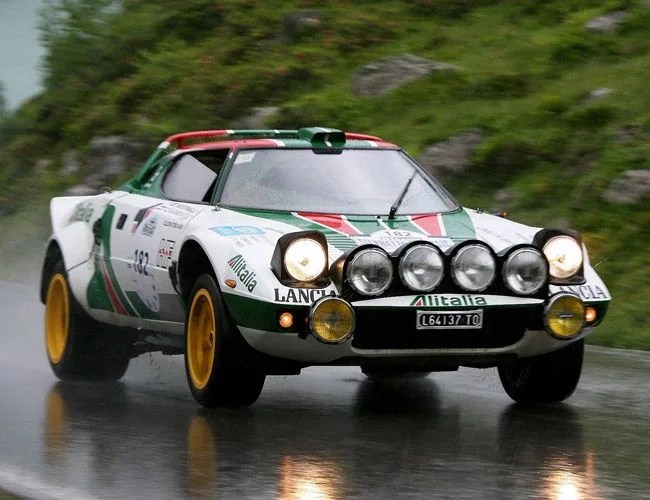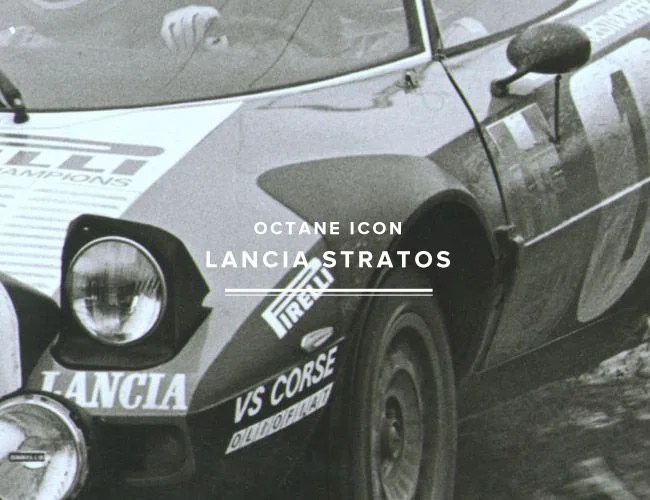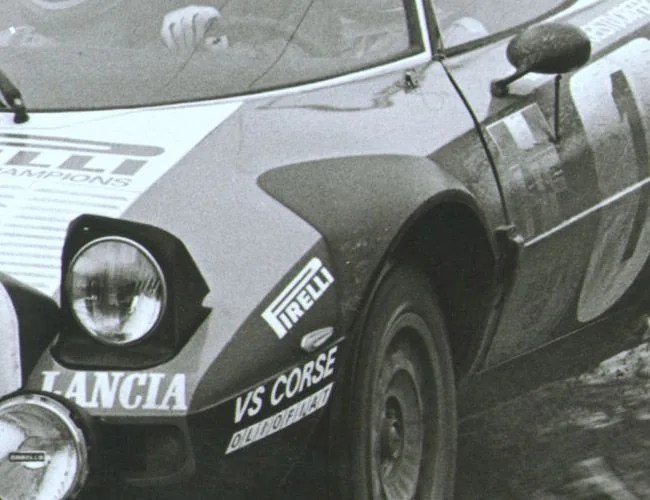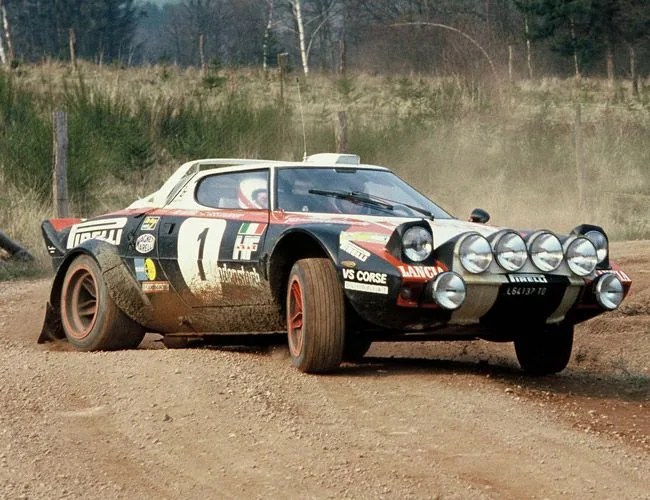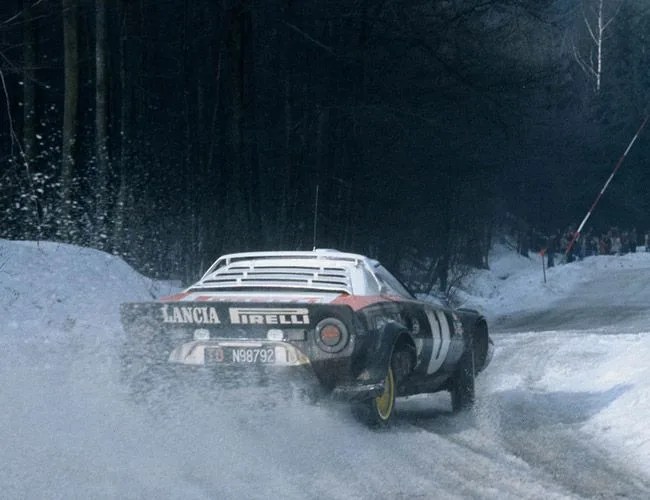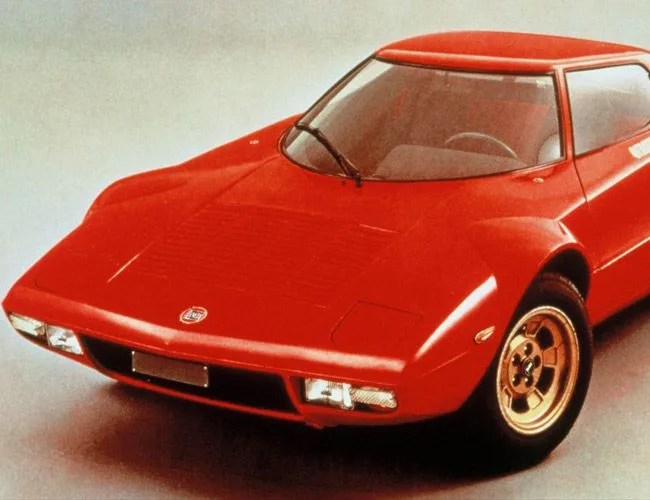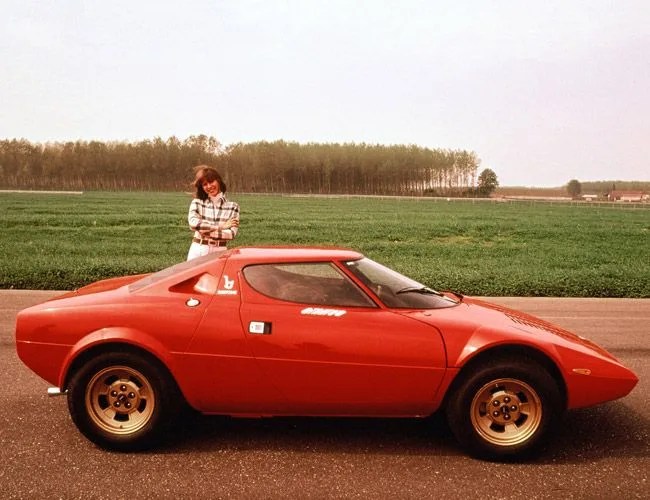A World Rally Car is like a hybridized cheetah and mountain goat. A driver’s ability to toss one of these high-powered monsters around a dirt course and through wooded and sometimes snowed over conditions is nothing short of remarkable. (Your 30 MPH commute through potholes and a dusting of light snow, meanwhile, seems like an automotive Gerber Graduate.) But even with in this prestigious group of mean machines, all are far from equal. Nearly forty years ago, Fiat saw fit to create a car purely dedicated to rally racing, one that was designed for the sole purpose of devouring dirty, twisty, bumpy closed roads with an insatiable appetite. Here was a singular standout among rally cars — the Lancia Stratos — and it was marvelously beautiful and capable. What the Stratos harkened was a design and build exclusively for rallying, something that had never been done before and would only last for a time. What Bertone designed and Fiat built became a legend.
MORE AUTOMOTIVE LEGENDS: Octane Icon: Porsche 917 | Octane Icon: Lamborghini Countach | Here to Eternity: The 50 Most Iconic Cars in Motoring History
What It’s All About
Looking like the combination of a duck’s bill and a chisel, the Lancia Stratos was developed as a rally car for Group 5 racing and as an homologation car (production numbers to justify its rally racing intentions) a year after the revolutionary Lancia Stratos HF Zero car debuted. The radical Zero concept car motivated Lancia team director Cesare Fiorio to advocate for a rally car of singular purpose. He got what he wanted. The flaming red Stratos HF prototype bowed in 1971 with a unique crescent-shaped windshield that wrapped around the cabin for untrammeled visibility, a low and flat hood (like the Zero before it) and virtually no rearward visibility — designed as such since rally drivers were racing against the clock rather than other drivers. The interior boasted not even a modicum of comfort for both driver and passenger, with basic seats, cramped footwells and poorly placed pedals.
Replete with quad rally lights on the hood, the Stratos looked like an angry imported wolf spider on wheels.
Yet it was a car with virtually limitless rallying potential based on design and performance. The remarkably short 86-inch wheelbase meant that it was incredibly maneuverable, and the highly tuned Ferrari engine in racing form translated to blinding speeds. But this wasn’t car anyone could simply sit down in and drive fast. It required acclimation due to the somewhat skittish nature of the handling from the combination of a short wheelbase and rampant power. Once a driver got the hang of things, though, the Stratos was wickedly capable, managing corners adroitly and charging down straightaways. All of this made its standing in the pantheon of automotive icons, both for the street and for the track, easily cemented.
